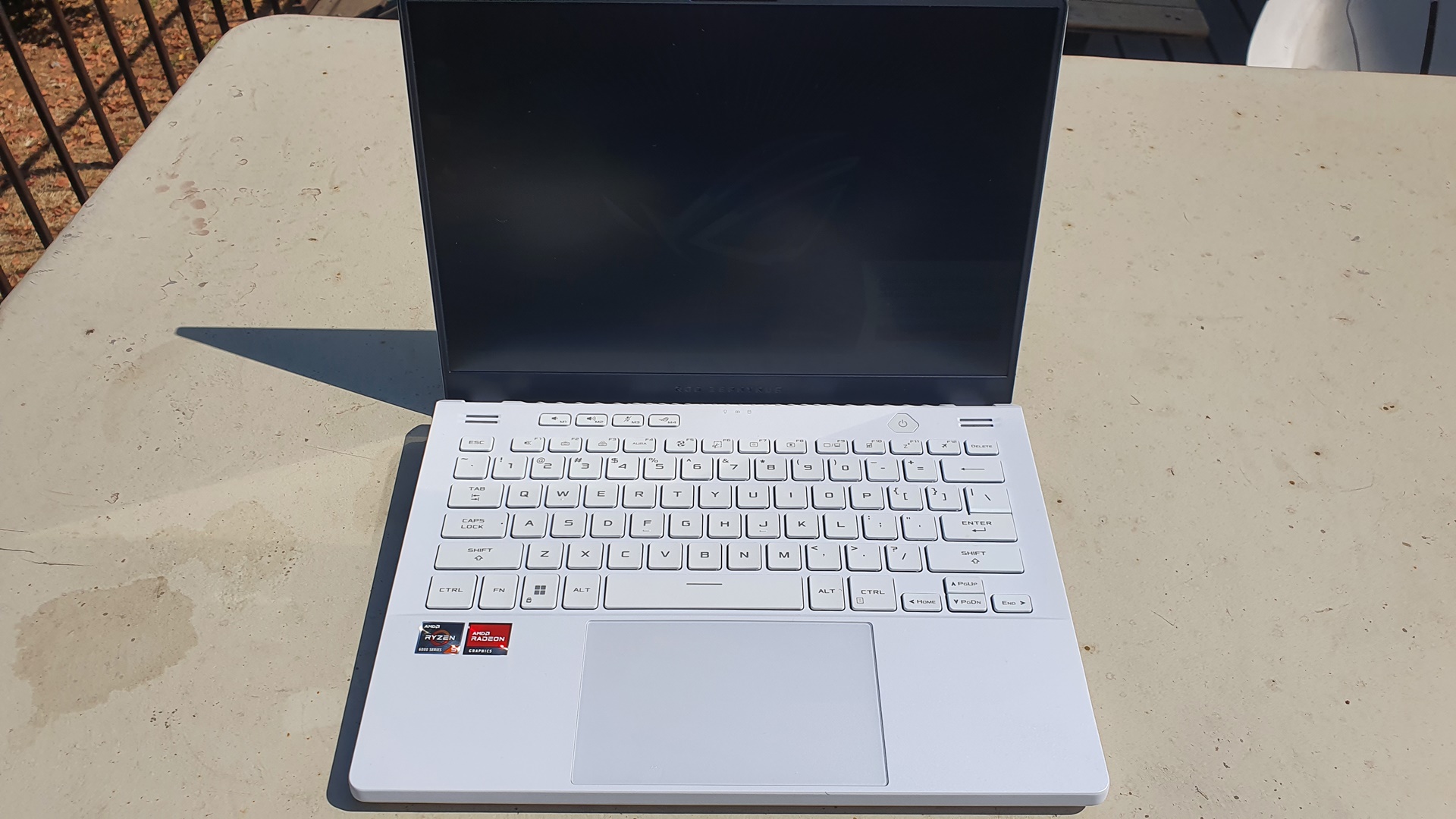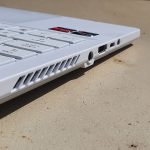Loadshedding and the increased power demand from components go together like mud and a white wedding dress. Sure, you can play some games, but that Nvidia GPU and AMD CPU are bound to tear through the battery capacity at an alarming rate.
What would be great is having the ability to switch to say integrated graphics when Eskom cuts to the power to conserve battery life.
Now, we know that being able to switch between integrated and discrete graphics isn’t new, but it’s an interesting feature inside ASUS’ ROG Zephyrus G14 notebook.
This tiny notebook is rocking the latest in AMD hardware for notebooks and we were rather impressed. This is why.
The rundowns
This is a modern notebook but we’re always pleasantly surprised to see AMD taking up hardware duties here. The specs are as follows:
- AMD Ryzen 9 6900HS @ 3.6GHz octacore;
- 16GB DDR5 @ 4800MHz;
- AMD Radeon RX 6700S 8GB GDDR6;
- Up to 1TB NVMe SSD storage.
The display is a 14inch affair with a maximum resolution of 2560 x 1600 sporting a 120Hz refresh rate. The display is Pantone Validated, covers 100 percent of the DCI-P3 colour gamut and supports both Adaptive Sync and Dolby Vision HDR.
Despite its tiny footprint, the Zephyrus G14 is a high performance beast. In Cinebench R23 we noted a score of 11554 in the Multi-Core test. In gaming scenarios we scored 8 444 in Time Spy and achieved a pretty consistent frame-rate of 96 in God of War. Bringing the settings down to 1080p, we were able to not only achieve, but maintain, a 120Hz refresh rate in Destiny 2 which is remarkable.
Regarding thermals, the CPU never went above 80 degrees Celsius in our testing while the GPU stayed at a rather low 64 degrees only hitting 75 degrees Celsius once we’d thrown God of War and Destiny 2 at it.
The performance is grand, but the real star here is the Mux Switch.
With South Africa experiencing regular power cuts, having a notebook with a massive GPU is just a reason for that battery to drain quickly. While having that GPU is great, sometimes you’d prefer to just watch a movie or browse the internet and then your GPU isn’t really needed.
The Mux Switch lets you easily switch between discrete graphics and integrated graphics. To be frank, the Mux Switch is present in all ROG notebooks launching this year so you don’t need the Zephyrus but with a notebook packing a 76Whr battery, power saving options are necessary.
Overall, performance is fantastic and we aren’t disappointed in the Zephyrus, even if we’re not the biggest fans of tiny notebooks.
As for ports, the Zephyrus features two USB 3.2 Gen 2 Type A, two US 3.2 Gen 2 Type C with DisplayPort 1.4 (one support power delivery as well), HDMI 2.0b, 3.5mm audio and a microSD card reader.
As regards connectivity, there is no LAN port, but you do get WiFi 6E and Bluetooth 5.2 support.
All of this is packaged in a 1.72kg notebook that will boggle the mind because it’s just so small and incredibly powerful for its size.
The AniMe Matrix “feature”
The AniMe Matrix that adorns the lid of the Zephyrus G14 has always felt silly to us. Not only are you not the one seeing it, the idea of wasting power on flashing lights feels like just that, a waste.

ASUS has made improvements to this feature however with the dot-matrix display now sporting more LEDs which mean more possibilities such as playing games on the thing or rather letting folks watch a low quality version of the game you’re playing?
These games are limited to those created for the dot-matrix display namely: Slot Machine, Shoot’em Up and Whack A Mole.
It just feels like a waste of money to us however and we’re going to score the notebook lower because of this. This notebook starts at R39 999, kicking the dot-matrix display into touch would surely have brought this price down.
It’s a cool, but ultimately useless feature that to our mind only adds to the cost.
Battery power
As mentioned the G14 is storing a 76Whr battery and it also supports Fast Charge technology. During our battery run down tests we noted a power on time of seven hours and 50 minutes with the display brightness set to full and volume set to 75 percent.
However, when utilising the Mux Switch and using the integrated graphics exclusively we had the notebook running for 10 hours 34 minutes.
When the notebook’s battery runs flat, Fast Charge support tops you up to 50 percent charge in 30 minutes which is great but we do worry that this will negatively affect the battery over the long term.
With that having been said it’s great to have fast charging to top the notebook up when you really need the charge.
Conclusion
Aside from the dot-matrix display, the ROG Zephyrus G14 is a rather good notebook. It manages thermals well, the fan noise isn’t extreme and the Mux Switch is a great feature that we’re glad to see isn’t exclusive to this notebook.
The battery life and fast charging is great especially here in South Africa where the electricity situation is constantly changing.
Even the price isn’t overly bad although again, that dot-matrix display isn’t something we feel is necessary and to our mind, only serves to inflate the price.
With that having been said, the ROG Zephyrus G14 is a well appointed gaming notebook that performs incredibly well in gaming. You could also throw some video, audio and photo editing at this notebook but we’d recommend an external display as even with a 91 percent screen-to-body ratio, the display is on the small side for that use case.
Our conclusion then is that if you’re a fan of smaller notebooks (and even if you aren’t), the ROG Zephyrus G14 is well worth a look. The full AMD setup paired with improved cooling and a larger display all work to create one of the best notebooks we’ve used so far this year.
Just ditch the dot-matrix display next year please ASUS.



